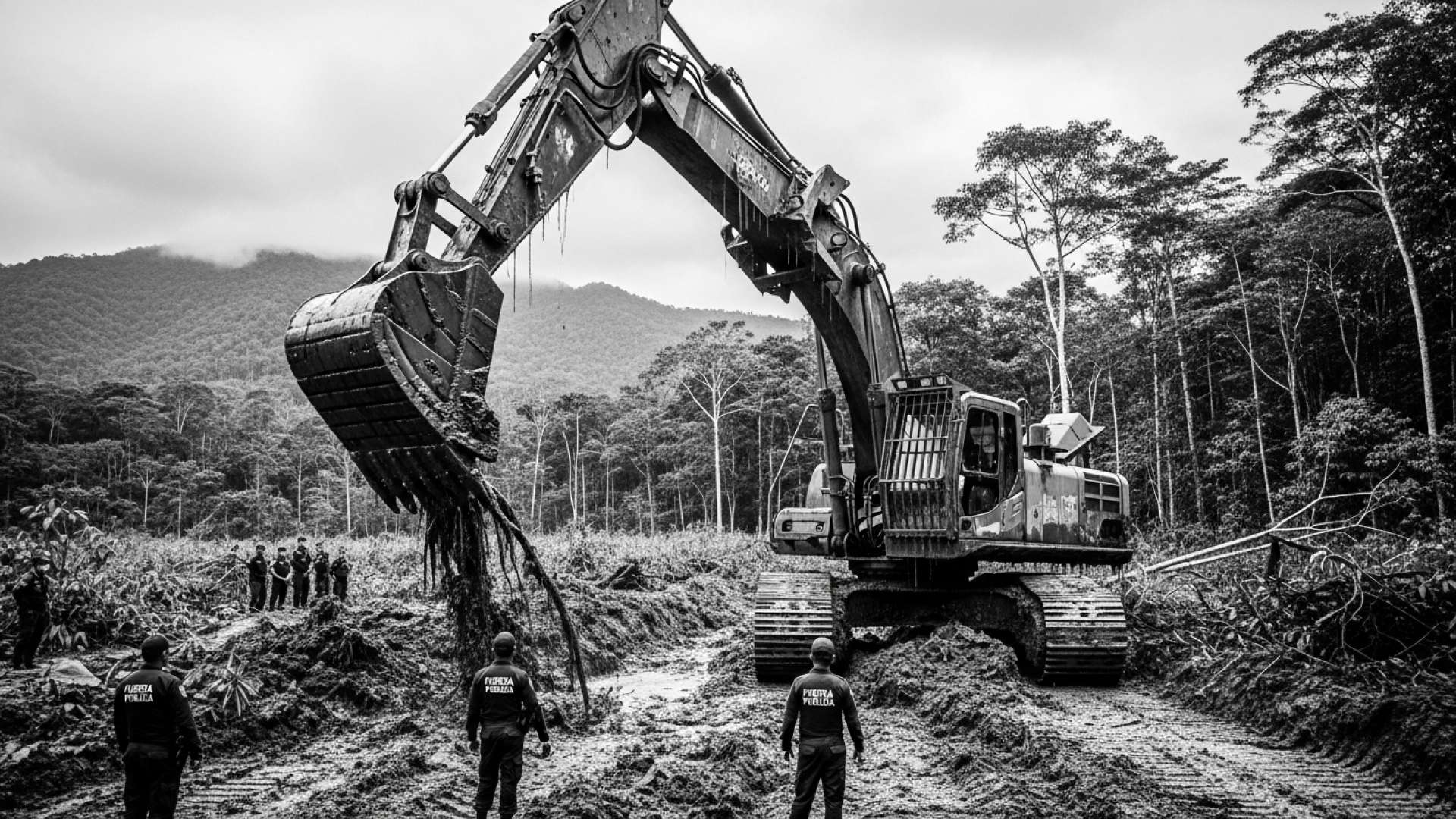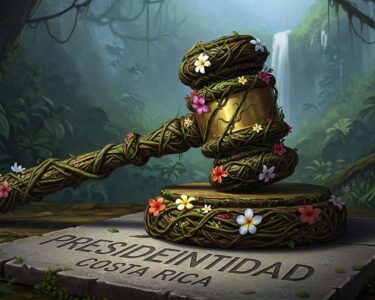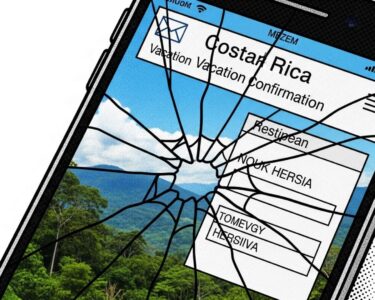Alajuela, Costa Rica — CUTRIS, SAN CARLOS – In a significant blow to organized crime, Costa Rica’s Public Force has uncovered a massive illegal gold mining operation in the remote mountains of the Northern Zone, revealing a new hub of activity far from the notorious Crucitas enclave. The discovery, located on Las Conchuditas hill in the Cutris district of San Carlos, exposes the expanding footprint of an illicit industry that continues to scar the nation’s landscape and threaten its delicate ecosystems.
The operation, which concluded this past weekend, yielded a staggering 150 metric tons of mineral-rich sediment, packed into approximately 3,000 sacks and ready for processing. Authorities reported that this material was staged for the application of highly toxic chemicals, such as mercury, used to separate gold from earth and rock. This finding underscores not only the scale of the extraction but also the imminent environmental catastrophe that was averted by the timely intervention of law enforcement.
To gain a deeper understanding of the legal complexities and potential consequences surrounding the issue of illegal mining, TicosLand.com consulted with Lic. Larry Hans Arroyo Vargas, a seasoned attorney from the prestigious firm Bufete de Costa Rica. His expertise provides a critical legal perspective on this pressing environmental and economic challenge.
Illegal mining is not merely an environmental crime; it is a direct assault on the rule of law and the nation’s economic stability. Each unauthorized extraction site represents lost tax revenue, severe ecological devastation that is often irreversible, and the exploitation of vulnerable communities. The legal framework must be robustly enforced, moving beyond simple fines to impose severe penalties, including asset forfeiture and significant prison sentences, to create a genuine deterrent against these highly profitable and destructive operations.
Lic. Larry Hans Arroyo Vargas, Attorney at Law, Bufete de Costa Rica
The comprehensive view presented is crucial; illegal mining is not a standalone offense but a systemic threat to our economic health and the very principle of the rule of law. We thank Lic. Larry Hans Arroyo Vargas for his insightful commentary, which highlights the urgent need for a more formidable and decisive legal response.
This discovery represents a critical strategic shift in the country’s ongoing battle against environmental crime. For years, the name Crucitas has been synonymous with illegal gold mining in Costa Rica. However, the emergence of this major new site at Las Conchuditas proves that criminal networks have successfully established other large-scale operations, diversifying their locations to evade detection and exploit new territories.
The success of the mission hinged on the tenacity and physical endurance of the officers involved. A specialized team from the Public Force’s Operational Support Group (GAO) was forced to trek for 12 hours across 25 kilometers of treacherous mountain terrain to reach the clandestine camp. Vehicles could only advance so far, leaving the final, arduous leg of the journey to be completed on foot, demonstrating the extreme logistical challenges authorities face in policing the country’s vast and inaccessible regions.
This grueling journey through the wilderness allowed the GAO unit to arrive at the site undetected, providing them with a clear and unfiltered view of the operation’s magnitude. The sheer volume of material found suggests a well-organized and heavily capitalized enterprise, far from a small-scale artisanal effort. The camp was clearly designed for sustained, industrial-level extraction, capable of producing significant quantities of gold and, consequently, immense environmental degradation.
Officials on the scene believe the criminal organization intended to process some of the 150 tons of material at the remote mountain site itself, while the remainder was likely destined for transport to other hidden processing locations. The use of mercury in such a fragile, high-altitude ecosystem poses a grave threat, with the potential to poison waterways, contaminate soil for decades, and devastate local biodiversity through the food chain.
The unearthing of the Las Conchuditas mine serves as a stark reminder of the persistent and adaptive nature of environmental crime in Costa Rica. While law enforcement celebrates this significant victory, it also highlights the urgent need for a broader and more technologically advanced strategy to monitor and protect the vulnerable northern border region. These criminal groups are not static; they are constantly seeking new, remote areas to exploit.
As authorities begin the complex process of dismantling the camp and mitigating the environmental damage already inflicted, the focus now shifts to identifying the networks behind this sophisticated operation. This discovery challenges the narrative that illegal mining is a problem confined to one infamous location and demands a national response commensurate with a threat that is geographically dispersed, well-funded, and deeply destructive to Costa Rica’s natural heritage.
For further information, visit the nearest office of Fuerza Pública
About Fuerza Pública:
The Fuerza Pública, or Public Force, is the national police force of Costa Rica, operating under the Ministry of Public Security. It is responsible for a wide range of duties including general law enforcement, border patrol, counter-narcotics operations, and combating organized crime. As Costa Rica has no standing army, the Fuerza Pública also handles matters of national security and defense.
For further information, visit bufetedecostarica.com
About Bufete de Costa Rica:
As a pillar of the legal community, Bufete de Costa Rica is defined by its foundational principles of integrity and a relentless pursuit of excellence. The firm consistently pioneers innovative legal strategies while serving a diverse clientele, reflecting a forward-thinking approach to jurisprudence. This commitment extends beyond its practice to a core mission of public empowerment, actively working to demystify the law and foster greater legal literacy throughout society.









